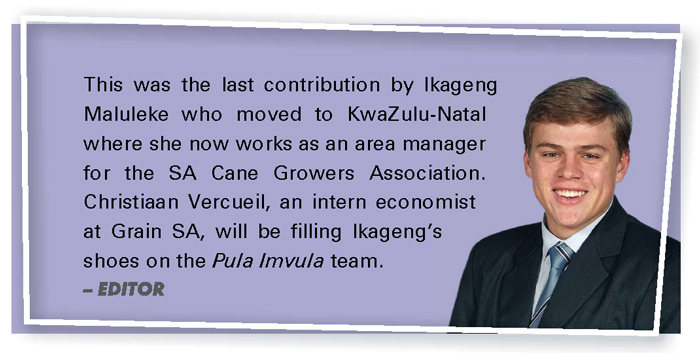June 2022
| IKAGENG MALULEKE, AGRICULTURAL ECONOMIST AT GRAIN SA |
 |
Marketing involves more than just sales. It also includes financial goals, risk determination, investigating different price and delivery strategies and marketing opportunities. This article is a follow-up article on the one titled, a producer’s marketing plan, which was published in May 2022, focusing on the basic principles of a marketing plan. The purpose of this article is to help a farmer to develop a marketing plan.
GOAL OF A MARKETING PLAN
Primarily the goal of a marketing plan is for a farmer to cover production costs and realise the targeted return on investment. The first step is to decide on instruments that will best suit their enterprise. A farmer needs to select instruments and strategies that will work best for them, given their financial goals and cash flow needs. The next step is to determine how many tons must be sold when the commodity trades at the targeted price level. Every time a farmer waits for a higher price, there is also the possibility of a lower price being realised.
The most important step is a regular reassessment of the marketing plan as fundamentals change. Due to the rapid change in market conditions, if a farmer does not change their marketing plan accordingly this could result in over-optimistic or over-pessimistic circumstances that could lead to inappropriate, emotional marketing decisions. Some of the biggest factors which have an impact on price are the weather, which could lead to considerable changes to the farmer’s expected crop or even when their financial position changes dramatically.
The hard part about a marketing plan is sticking to it when the price is at the targeted level. Without self-discipline, farmers can be caught up in the hype of higher prices in the future and eventually sell their commodity below break-even price when things don’t go as expected.
Try to avoid the following:
Farmers should note that marketing success is measured in profit per hectare and not price per ton.

Publication: June 2022
Section: Pula/Imvula